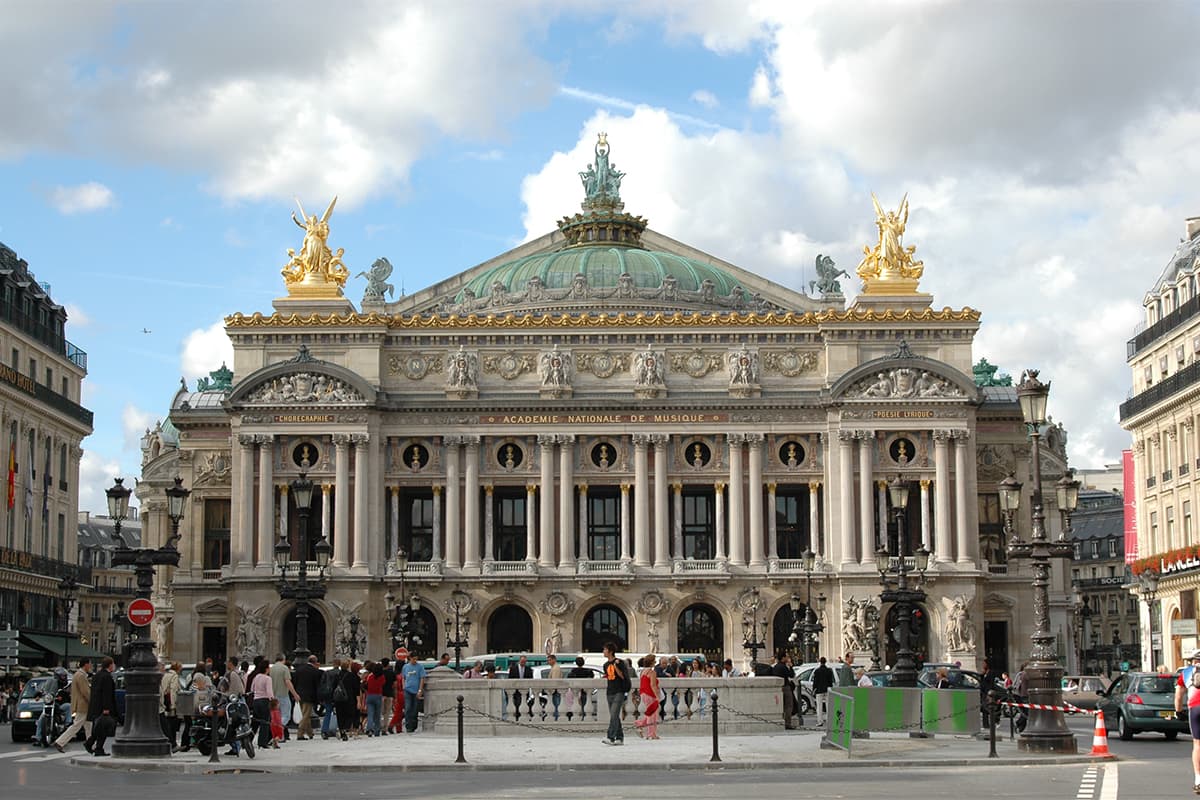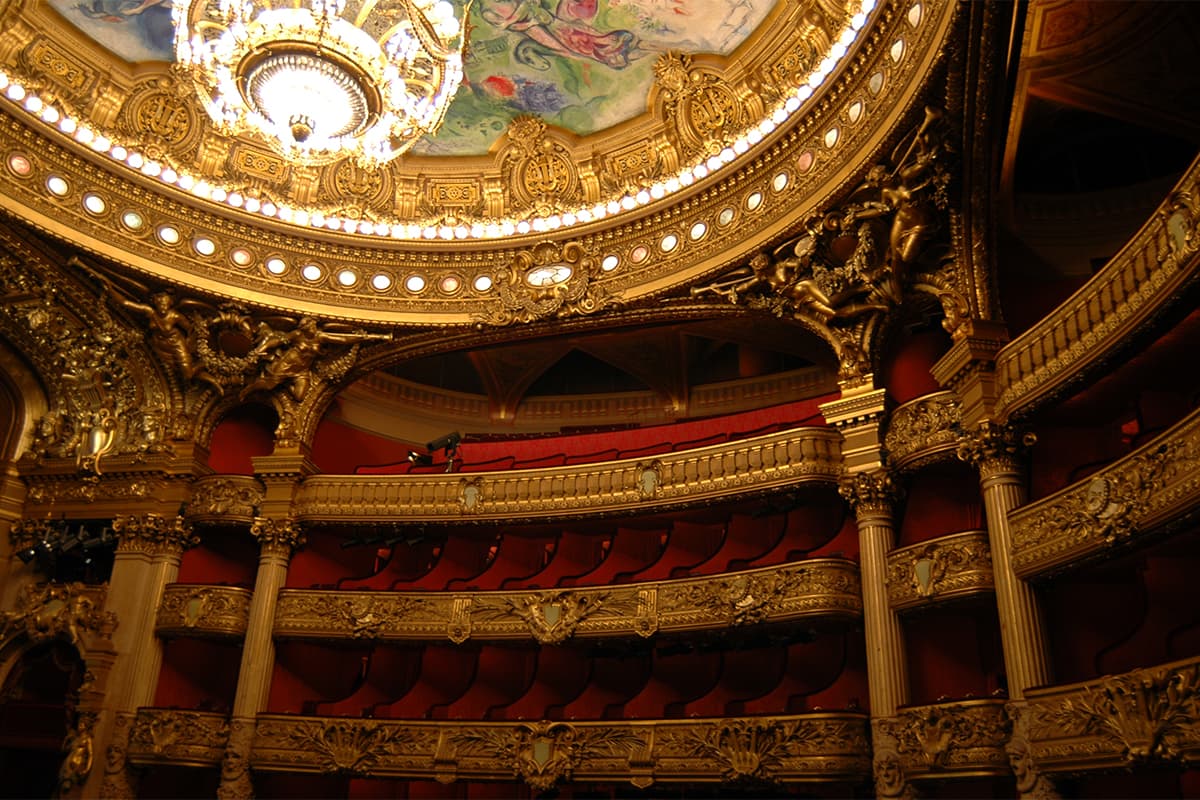パリに憧れすぎるのはやめましょう。
Essay|2024.04.24
Photo_Kotaro Sakata
Text_Kotaro Sakata
『華の都パリ』という言葉を聞いたことがあると思います。初めてパリに行ったときはワクワクしたのを思い出します。それから時が経ち、いろいろな知識の点と点が、つながり、細部からパリ全体を歴史的や美術的に俯瞰でしていくと、かなりの疑問が沸き上がってきます。
現在のパリ市中心地が出来たのは、ナポレオンⅢ世の第二帝政時代のパリ万博を目的に突貫工事で造られたものです。日本は明治時代。それまでは、ナポレオンI世の戦勝記念で造られた凱旋門しかありませんでした。あまりにも、不衛生で、整備されていなかったパリ市を、海外からの来賓にいいところを見せたい一心の見栄で、既存の凱旋門を中心に放射状の道路を整備し、下水垂れ流しのセーヌ川の清掃を始めたわけです。それまでは、ごみはそのまま窓から投げ捨て、川の上流で洗濯をし、下流では下水がそのまま流されていた。19世紀末のパリはさぞや悪臭だったことでしょう。
そして、その突貫工事で造られた一つが、無名ガルニエがデザインしたオペラ座(ガルニエ宮)であります。このガルニエは、一見、絢爛豪華に見えますがよく見ると、様式がめちゃくちゃでいわゆる、グチャグチャ建物であります。
まず、地盤の緩いパリ市を埋め固め、基礎階段を造り、その上に建てられた建築物は、上部はロマネスク様式、外観の途中はゴシック様式、柱はギリシャ様式、途中はロココ様式で、下はバロックとゴシックの混在であります。中の階段の柱の基礎石は、バロック時代でも敬遠されそうな奇抜な色石のミックスであり、中の天井画は、ロシアコンテンポラリーのシャガール(それも後付け)という、なんとも形容のしがたい建物なのです。それが、今や一大観光建築物として、知れ渡っているのが不思議極まりないです。不運にも焼け落ちたノートルダム大聖堂も、ゴシック様式の代表で、ゴート族(ゲルマン民族様式)のモノであり、気味の悪いキマイラ(シメール)の彫刻が魔除けとしてまつられ、カソリックとは相いれないものなのです。つまり、パリは、ゴート族の村社会から出来上がったものなのです。次回、パリを訪れた際には、冷静に統一感のないパリを観察してみるのも新たな観光の仕方で、面白そうです。
Let’s Not Over-idealize Paris.
You’ve likely heard Paris referred to as the “City of Light.” I remember my excitement when I visited Paris for the first time. But gradually, historical and artistic insights about Paris stirred various questions in my mind.
The transformation of Paris’s core was expedited for the Paris Exposition under Napoleon III, a period corresponding to Japan’s Meiji era. Prior to this, the Arc de Triomphe stood almost alone as a monument to Napoleon I’s triumphs. Previously unsanitary and neglected, the city was revitalized to dazzle visitors, with major changes including the construction of roads radiating from the Arc de Triomphe and efforts to clean the polluted Seine River. Before these reforms, daily life in Paris was marked by direct disposal of waste from windows and untreated sewage contaminating the river, making Paris a foul-smelling place in the late 19th century.
The Opera House (Palais Garnier), designed by the initially obscure Garnier during Paris’s rushed transformation, impresses with its luxury at first glance. Yet, a closer look reveals a building that is a jumble of architectural styles.
To build on Paris’s soft ground, the foundation had to be solidified. The structure that was erected features a mix of architectural styles: Romanesque at the top, Gothic midsections, Greek columns, Rococo flair, and a Baroque-Gothic base. The foundation stones of the pillars of the staircase inside are an eccentric mix of colored stones that would have been avoided even in the Baroque era, and the ceiling painting inside is a Russian contemporary by Chagall (also a later addition). Yet surprisingly the Opera House is now a major tourist attraction. Another representative Gothic structure, Notre Dame Cathedral, which sadly sustained fire damage, features grotesque chimeras to fend off evil, elements not typically associated with Catholicism. Essentially, Paris evolved from a Gothic (Germanic tribal) village. Coolly observing the disjointed unity of Paris might offer a new way to view and appreciate the city on your next visit.

パリオペラ座ガルニエ宮。
パリの『OPERA駅』を降りるとそびえたつ建築物で、多くの観光客が写真を撮り、階段に座って待ち合わせ場所に使っているが。その様式を観察すると面白い。

パリオペラ座ガルニエ宮内観。
シャガール天井画と内装のミスマッチを受け入れるのか否か、我々の審美眼が答えを出せばいい。
寿司のお供にガリではなくチョコ食べる感覚と近いかもしれない。


